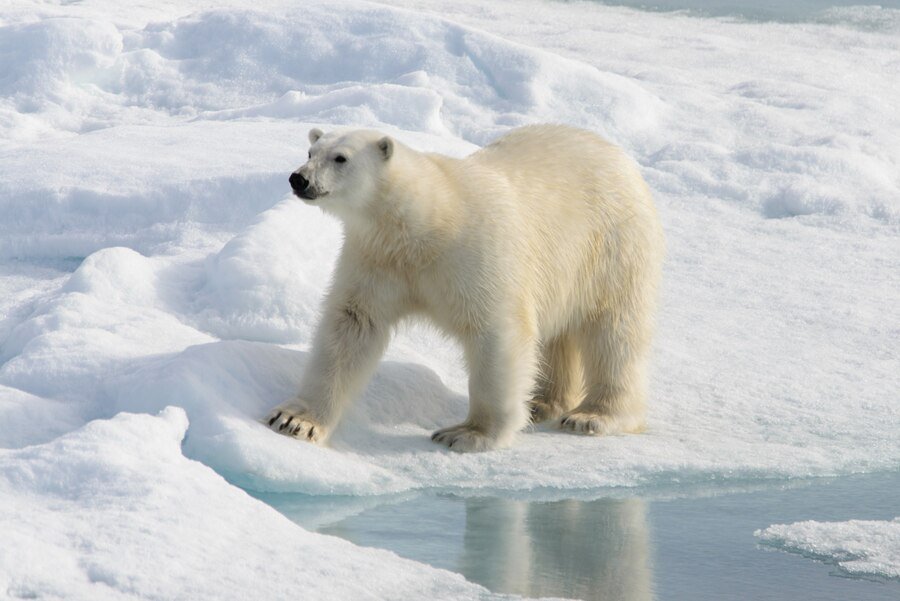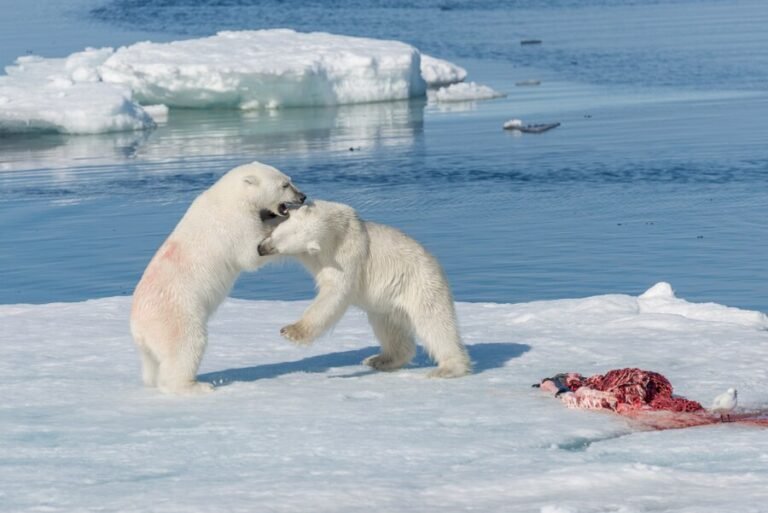Polar bears are among the most fascinating creatures on Earth. These magnificent mammals are not just symbols of the Arctic wilderness but also vital components of the ecosystem. In an age where climate change poses a significant threat to their survival, understanding polar bears and their unique adaptations has never been more critical. If you’ve ever wondered “en qué se especializan los osos polares” or what makes polar bears such exceptional Arctic dwellers, read on to explore the captivating world of these majestic beings, their role in the ecosystem, and what we can do to ensure their continued existence.
Into the World of Polar Bears
Polar bears, known scientifically as Ursus maritimus, inhabit the icy realms of the Arctic Circle, including areas in Canada, Alaska, Greenland, Norway, and Russia. These regions offer the cold, ice-covered ocean that polar bears need for hunting their favorite prey—seals. However, as climate change continues to diminish sea ice, polar bears face unprecedented challenges in finding food and maintaining their habitats. Understanding these magnificent creatures in the context of a changing world is more crucial than ever.
The Arctic is a harsh, unforgiving environment, yet polar bears have thrived there for thousands of years. Their ability to survive in such conditions is a testament to their incredible adaptations and resilience. By exploring their habitats and distribution, we gain insight into the unique challenges and opportunities that define the lives of polar bears in the wild.
Physical and Behavioral Adaptations of Polar Bears
Polar bears boast a range of specialized adaptations that allow them to thrive in the Arctic’s extreme conditions. Their striking white fur, for instance, serves as camouflage against the snow and ice, while also providing essential insulation against freezing temperatures. Additionally, their large paws, equipped with non-slip pads and sharp claws, are ingeniously designed for traversing icy terrain and swimming long distances.
Aside from their physical characteristics, polar bears have developed unique behaviors to survive in their environment. Their feeding habits revolve primarily around hunting seals, which they skillfully capture using a method known as “still hunting.” This involves patiently waiting by breathing holes in the ice until an unsuspecting seal surfaces. Socially, polar bears are mostly solitary animals, though they display complex social interactions during mating season and when raising cubs.
Polar bears’ ability to adapt both physically and behaviorally to their surroundings is a remarkable feat. These adaptations highlight the evolutionary ingenuity that enables them to endure and thrive in one of the planet’s most challenging habitats.
Polar Bears in the Arctic Ecosystem
In the Arctic ecosystem, polar bears hold the prestigious title of apex predator. Their presence is essential for maintaining balance within the food web, as they regulate seal populations and, in turn, influence the distribution of other marine life. This delicate equilibrium underscores the importance of polar bears as key players in the Arctic’s complex ecological tapestry.
Sadly, climate change poses a grave threat to this balance. Melting sea ice not only disrupts polar bears’ hunting grounds but also affects the entire Arctic ecosystem. Changes in ice patterns lead to shifts in prey availability, impacting not only polar bears but also other species that rely on the same resources. Understanding the interconnectedness of polar bears within the Arctic ecosystem is crucial for grasping the broader implications of climate change on this fragile environment.

Conservation Efforts and Challenges
Despite their resilience, polar bears are classified as vulnerable by the International Union for Conservation of Nature (IUCN). The rapid melting of sea ice, a direct consequence of global warming, remains the most significant threat to their survival. Additionally, pollution, oil and gas exploration, and human encroachment further jeopardize their habitats.
Conservationists and researchers are working tirelessly to protect polar bears and their environment. Successful strategies include international agreements like the Polar Bear Agreement, which promotes cooperation among Arctic nations, and initiatives focused on reducing greenhouse gas emissions. Community-based conservation efforts, such as the establishment of protected areas and sustainable tourism practices, also play a vital role in safeguarding polar bear populations.
While significant challenges remain, ongoing research and conservation initiatives offer hope for the future of polar bears. By understanding these efforts and their impact, we can better appreciate the collective responsibility to protect these iconic animals.
How You Can Help
You don’t have to be a scientist or an activist to make a difference in polar bear conservation. Simple actions can have a significant impact. Supporting organizations dedicated to wildlife conservation and adopting sustainable practices in your daily life are effective ways to contribute. Reducing energy consumption, advocating for policies that combat climate change, and spreading awareness about the plight of polar bears are all valuable steps you can take.
Eco-tourism, when practiced responsibly, can also benefit polar bear conservation. By choosing tour operators that prioritize environmental responsibility and sustainable practices, travelers can support local economies while minimizing their ecological footprint. Educating yourself and others about the challenges facing polar bears and the importance of conservation can inspire positive change.
Your actions, no matter how small, can contribute to the collective effort to preserve polar bears and their Arctic habitat. By taking an active role in conservation, you help ensure that future generations can marvel at the beauty and majesty of these incredible creatures.
Conclusion
Polar bears are more than just symbols of the Arctic; they are essential components of a complex ecosystem that requires our attention and care. Their specialized adaptations, role as apex predators, and vulnerability to climate change highlight the importance of conservation efforts in safeguarding their future.
